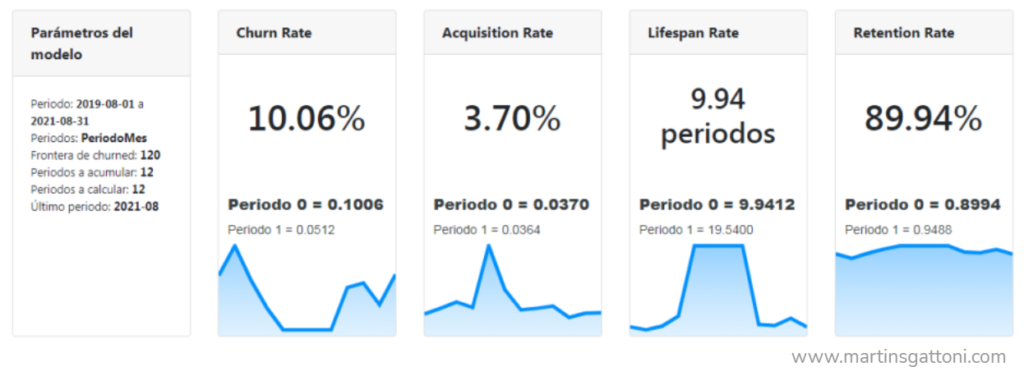
Autor Lic. Martín Marcelo Sgattoni
For marketers like you, there are two types of people: those who buy your products and those who don’t. The king of indicators, and the one you idolize, is how much of the market sales are yours and how much are your competitors. I have bad news for you: you suffer from myopia.
When we think of our market binary in “yes customers” and “no customers” we simplify our strategies. We make them primitive. In relation to “non-customers”, who are those who do not choose us, we search to seduce them so that they cross over to our sidewalk. In relation to “yes customers”, who are those who already use us, we classify them according to how much $ they bring us and we define a fixed promotional intensity for each cycle in relation to that value. The more profitable ones receive more investment and vice versa.
Summarizing: we apply RETENTION for “yes customers” and ACQUISITION for “no customers”. This is the historian’s strategy: customers are studied according to their past.
But there is a third category of vital importance that goes unnoticed: the “yes customers” who will soon become “no customers”. They hide among our sales, crouching and ready to abandon us. They are thinking about crossing over to the other side, seduced by the dark side of the force. And no, they will not warn us. They will make us believe until the last moment that they are happy by our side. The slamming of the door in our face will be strong, painful and without warning.
The good news is that actions speak. If we have enough information about the behaviors of our “yes customers” and apply the right analysis tools, we can predict their intentions. We don’t need them to warn us that they plan to leave. There is no need to wait for them to abandon us before we take promotional action to retain them. This is the strategy of the fortune teller: customers are valued based on what they are likely to do.
Sensing when a “yes customer” may abandon us and taking preventive action to avoid it is a marketing specialization and it has a name: CHURN ANALYSIS. The fundamental question that this set of techniques searches to answer is which “yes customers” show early signs of disengagement.
The strategy is simple. First we must identify “non-customers” who were “yes customers” and have already abandoned us. We must collect all the information we have about them, mainly demographic and behavioral characteristics. Using Machine Learning algorithms that allow us to micro-segment them (cluster them), we analyze the data and evaluate which behaviors correlate with abandonment.
Secondly, also through algorithmic analysis, we apply those patterns we discovered to our current “yes customers”. Essentially what we are looking for is to detect if we have “yes customers” whose current behaviors are similar to those of ex-customers who have already abandoned us.
In this way we no longer classify the market into two groups: “non-customers” and “yes customers”. This new approach leads us to classify the market into four segments.
First, we divided the “non-customers” into two subgroups: the “non-customers” who were never customers and the “non-customers” who were customers but left us. The latter made the mistake of leaving, but this was not in vain. They left behind the information which we will build our predictive model that will help us detect future abandonment.
The “yes customers” are also divided into two segments. After predicting the probability of abandonment for each customer, we can group them into “yes customers” and “yes customers” at risk.
This approach calls for a profound rethinking of commercial strategies. Traditionally, investment in promotion is defined by the customer’s category (how much $ he/she brings to our business). The more important it is, the more we invest in promotional impacts. This methodology is static. At most we modify the promotional frequency when the customer changes categories. That is, after the fact. We act on the past.

FUENTE: www.florensys.com
CHURNING analysis, on the other hand, allows for a dynamic approach. The process generates lists of “at risk” customers prior to the occurrence of the problem. A salesman/promoter can act earlier if this information is provided to him on a regular basis. The promoter has a powerful weapon: a list of his target whose characteristics show early signs of wanting to cross over to the dark side.
This method is essentially a new segmentation model: what position does each customer occupy when we rank them according to their risk of abandonment?
With all my data I generate a predictive model that will seek to algorithmically detect future “non-customers”. It is to be expected that the model will fail in several cases. That is to say that “non-customers” who abandon us and that the model failed to detect in time will appear. This is the fundamental difference between descriptive and predictive analysis: there are no sures, only probabilities.
To apply a DYNAMIC PROMOTION strategy, it is necessary to work beyond the model’s alerts. It is not enough to identify “yes customers” at risk. It is necessary to develop promotional actions at retaining these individuals. The model identifies them, but it does not solve the problem. How are we going to approach them so that they do not leave us?
Don’t get distracted. A high turnover rate is very expensive for your company. Some studies, somewhat generic, state that a business with a churn rate close to 5% is doomed to failure in the next 5 years. Do you know the current CHURNING RATE of your business? An active and astute marketing department must have active retention strategies based on the systematic study of customer behaviors. Even if your sales are increasing, not having a CHURN REDUCTION strategy is losing you money.
I invite you to learn more about our predictive demand analysis tool: www.florensys.com.
Author Lic. Martín Marcelo Sgattoni
 Cuando cumplió 9 años le regalaron su primera computadora: una TK83. Ese mismo día empezó a programar jueguitos y desde entonces ha sido autodidacta en el mundo de la informática.
Cuando cumplió 9 años le regalaron su primera computadora: una TK83. Ese mismo día empezó a programar jueguitos y desde entonces ha sido autodidacta en el mundo de la informática.


Comentarios recientes